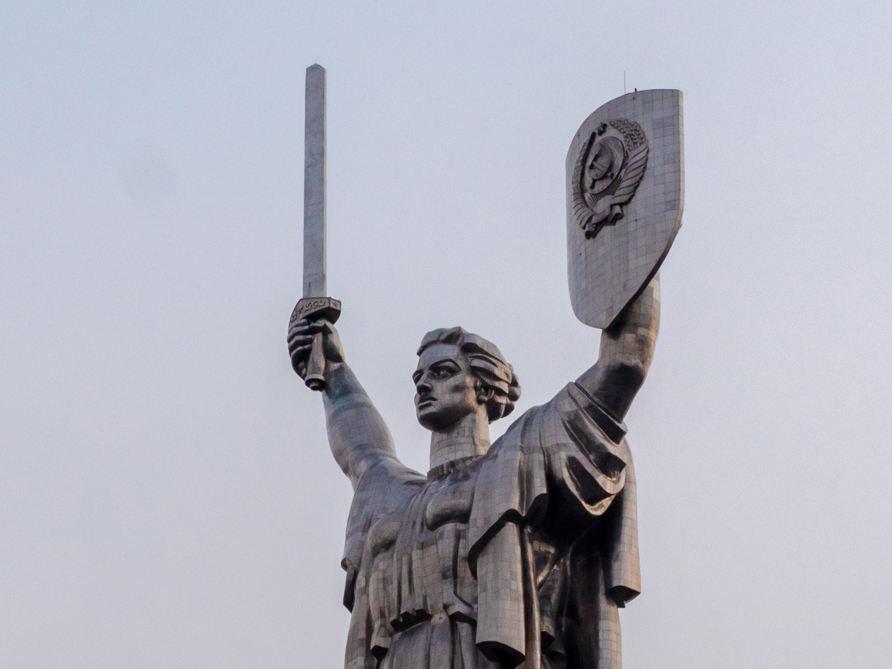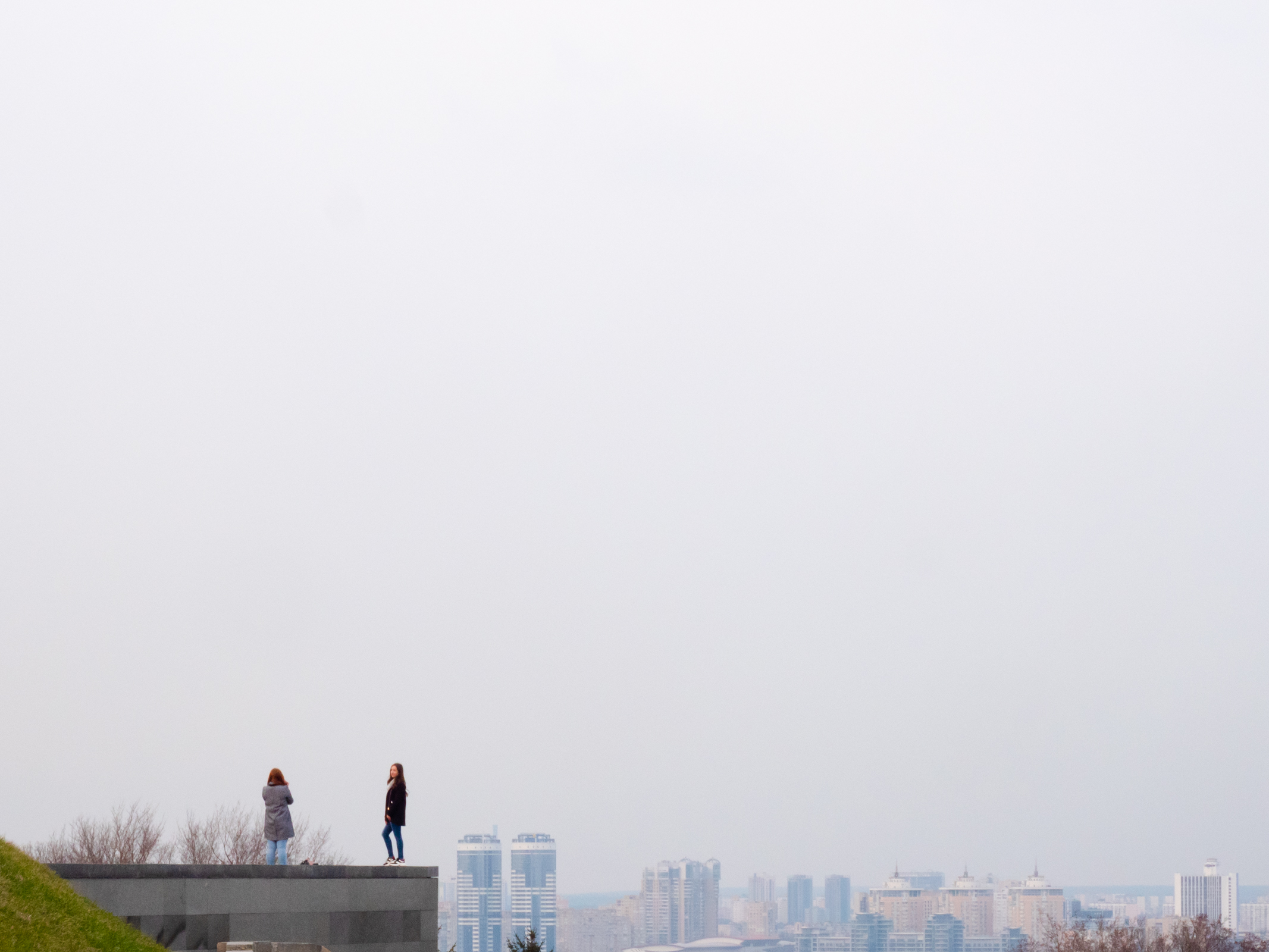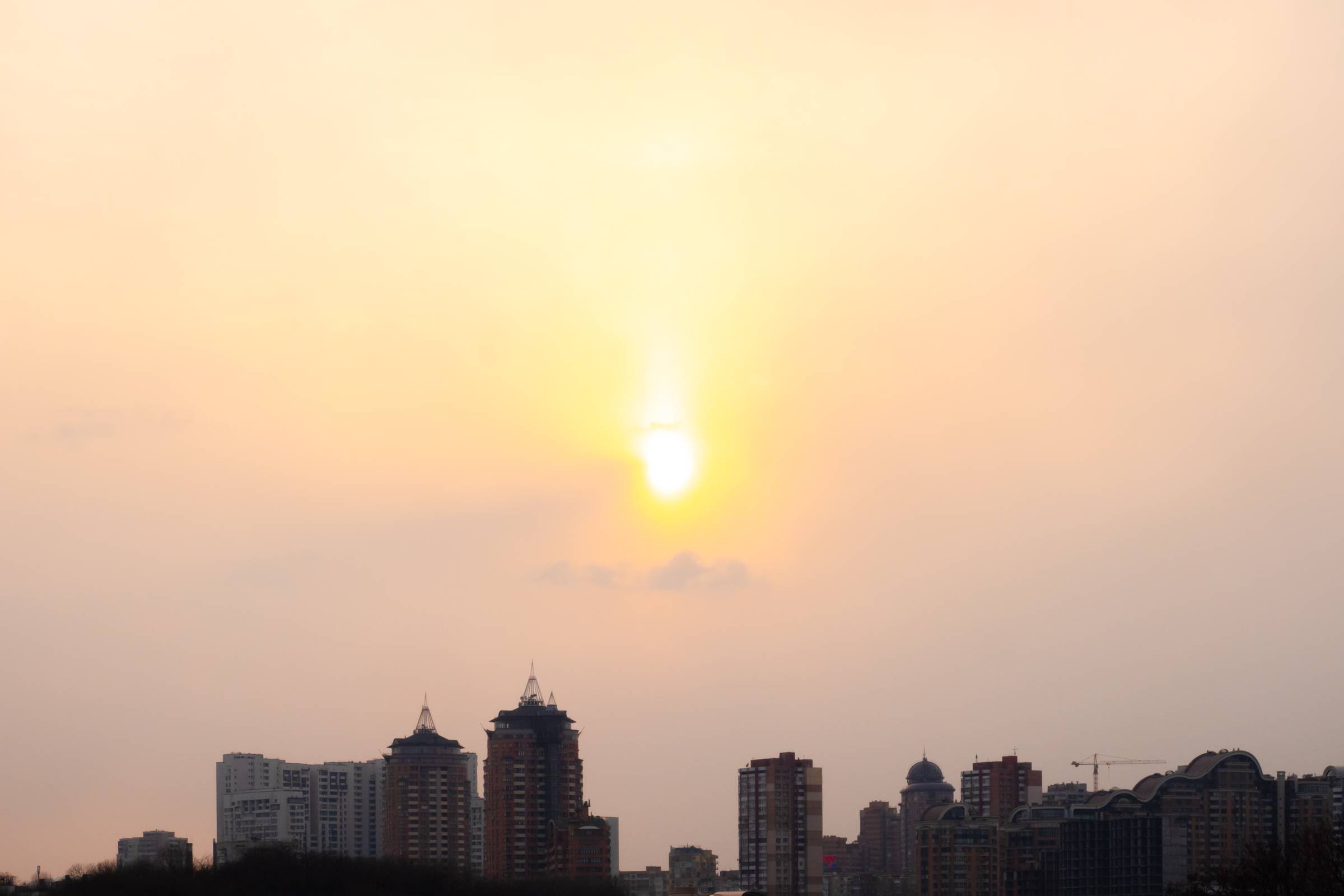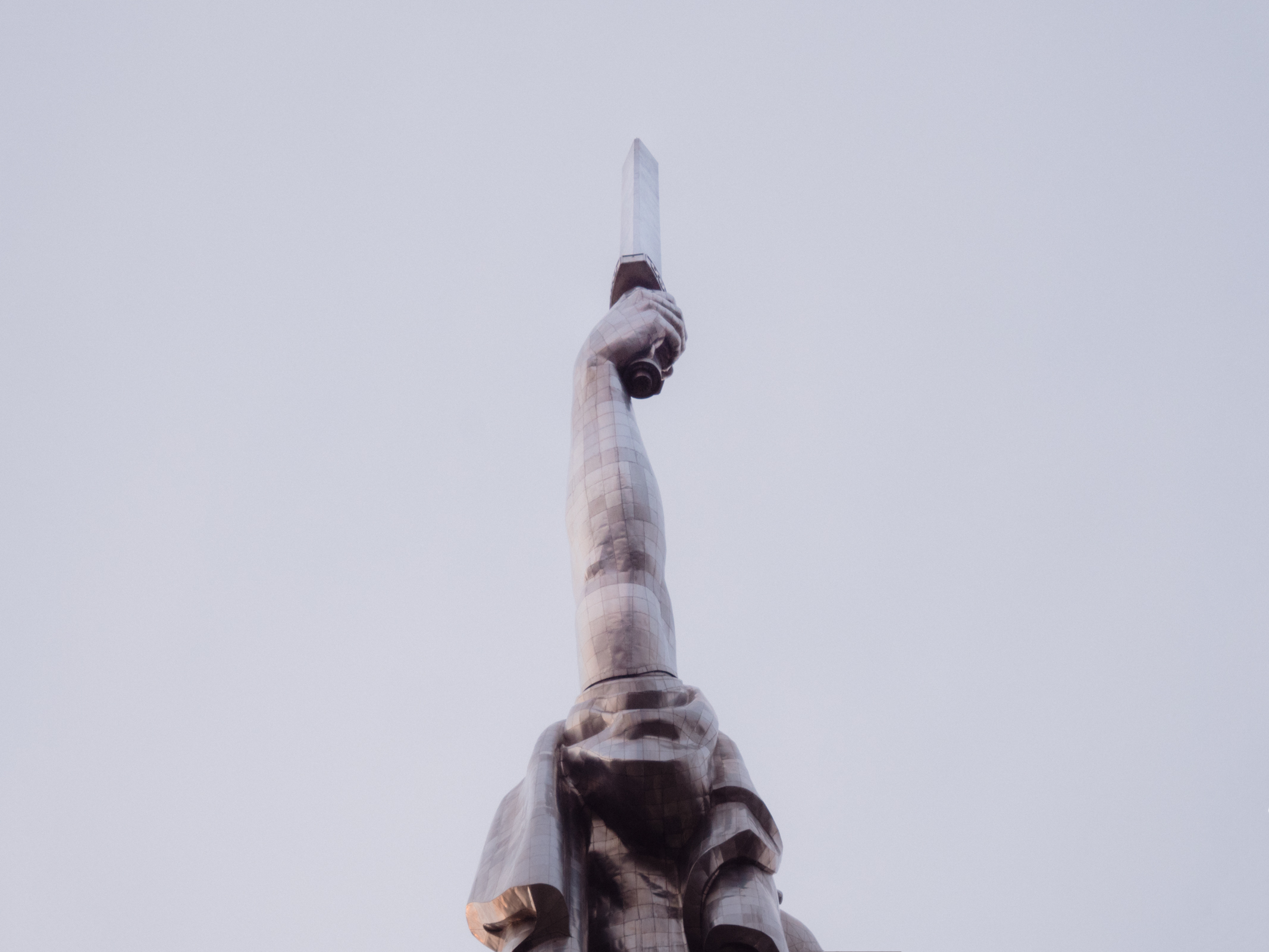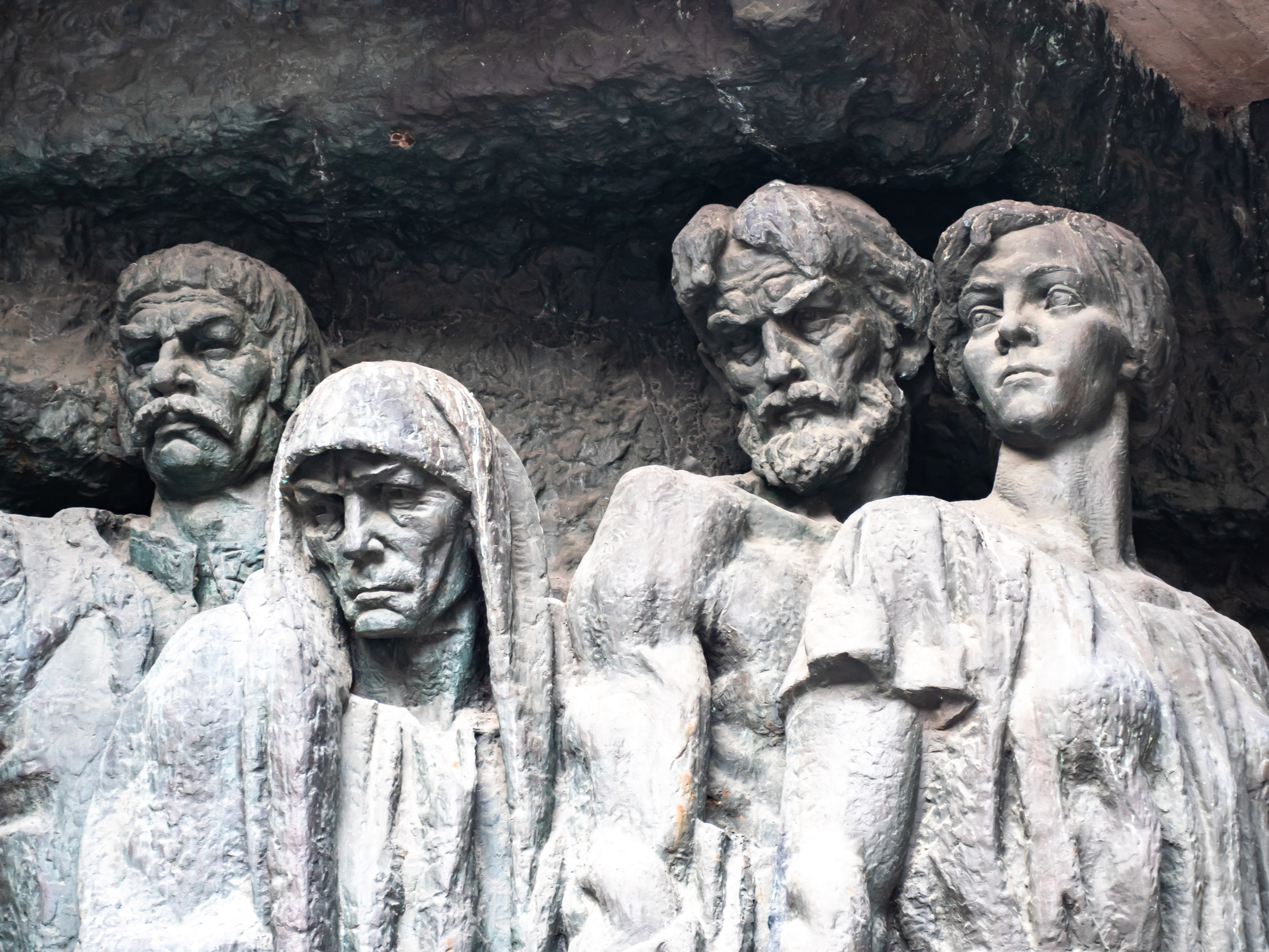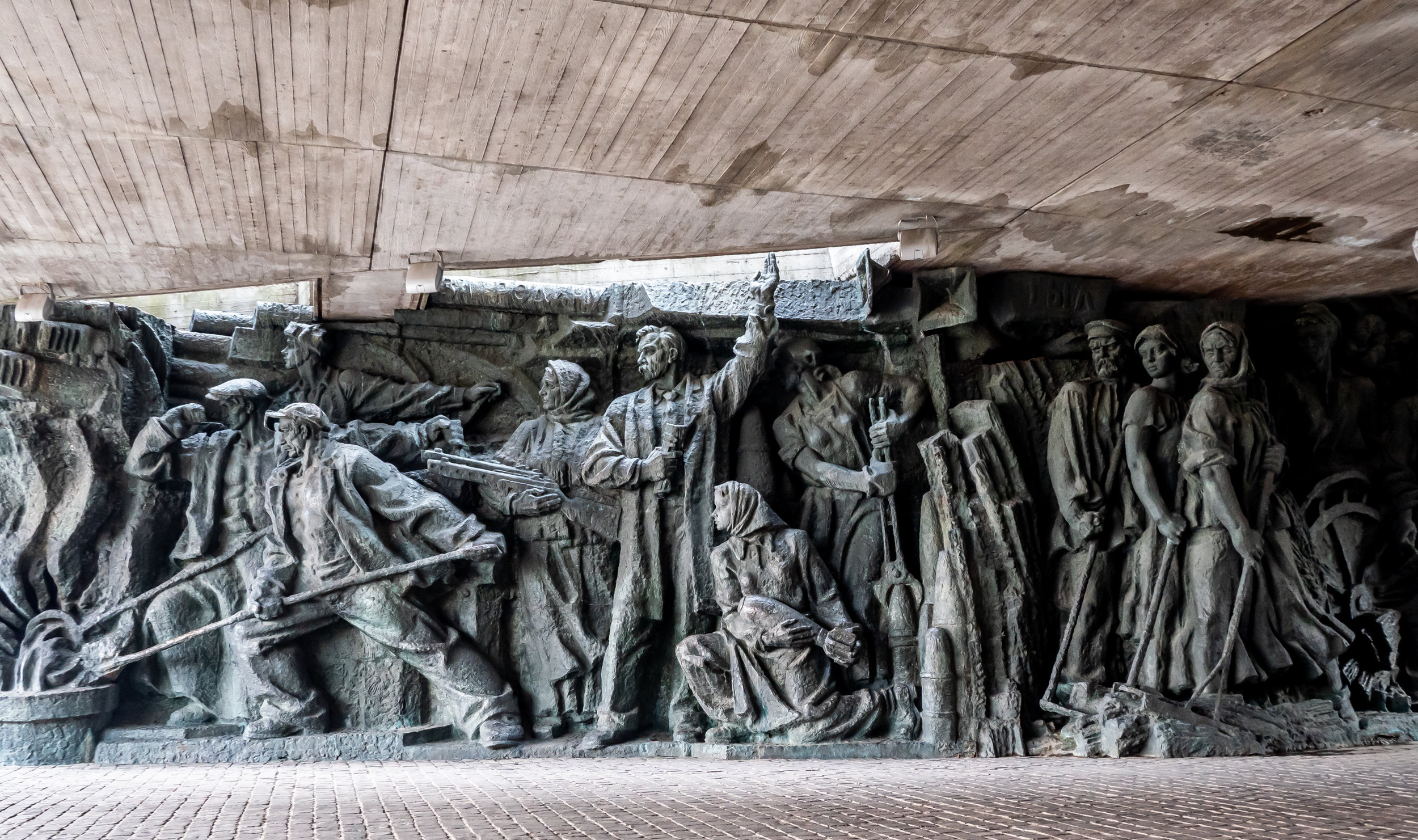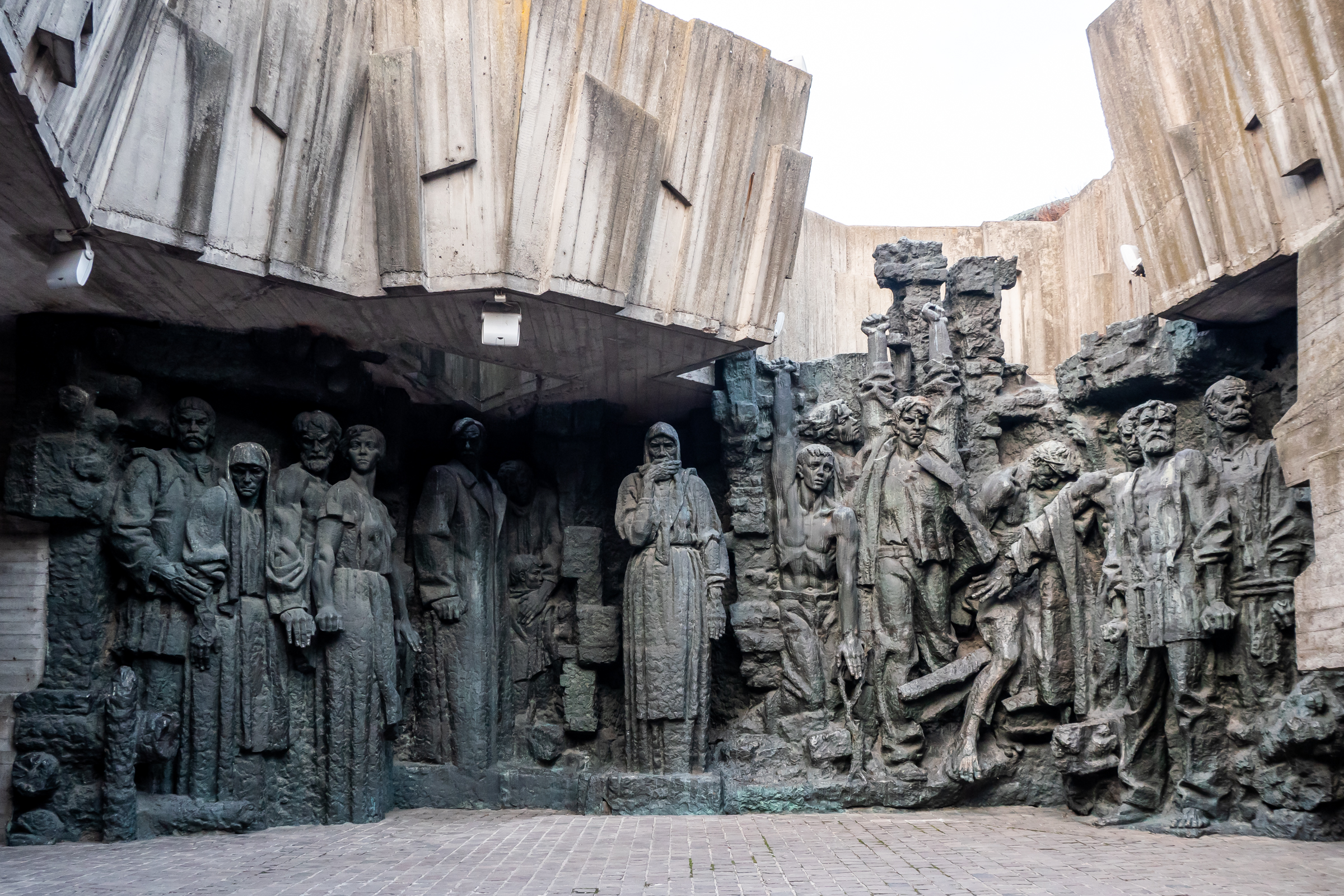I first saw an image of the Motherland Monument back in 2006 or so, in a New York art gallery. It was displayed appropriate to the subject and context of the situation: a large, framed glossy print hanging amongst other fine art photographs. I was impressed by the sheer grandeur of the subject, the way it dwarfed the people speckled in its midst. I wondered if it was even real, and where it might exist. Was this documentary, or imagination?
I've been processing the monument ever since, considering the grandeur of certain structures, comparing them to those familiar to me - the Statue of Liberty, most notably. That New York structure has a beautiful meaning to it: a monument to freedom, to humankind's pursuit of an unencumbered existence, free in a new land of opportunity. People have been honoring exalted ideas for centuries, idolizing gods and virtues in heavy matter, all across the globe. And while I generally prefer two-dimensional art, enormous statues are uncanny to behold.
A monument to the mother land. What is a motherland, exactly? What does an armed, empowered woman symbolize, and why does it resonate so profoundly?
Kiev is a Slavic capital city in the center-north of Ukraine, once considered the breadbasket of Eastern Europe. The country is vast - the second biggest in Europe, after Russia, and is home to a substantial population. Under Soviet rule, it was starved and impoverished, like most of the USSR's satellite states, its vast stretches of farmland feeding the oligarchs in the east. The Russian Empire was cruel to the majority of its people, but throughout the cities behind the iron curtain, it left some fantastic structures in its wake.
Soviet architecture has a way to it. It's grand and gorgeous, while also heavy and imposing. It's stately, suggesting something of solidity and permanence, but with refined aesthetics. It's brutalism at its most beautiful, memorializing the most brutal of all Earthly events. There were more deaths in World War II than in any other confrontation before it, and most of those deaths happened on the eastern front of the western theater, here, in Slavic land. The Slavs suffered more deaths than any people in history, and this tragedy shows itself in its people still. I sense deep soul here.
Those Soviet soldiers fought against Nazi Germany and its allies, but they died for the motherland. They died in defense of a certain belief in the sovereignty of these people, their claims on this defended space. The motherland is nature, pure and powerful, giver of life and sustenance. It’s embodied with a sword and shield and a stoic face of steel. It faces any adversary that might challenge it, stands strongly for its citizens.
Next to the Motherland Monument is an eternal flame, a light that never goes out. In this case, it's ceremoniously limited to certain occasions, in the name of energy preservation and prudent resource allocation. The statue is and its surrounds are controversial now, built by Soviets in the 1970s, before Ukraine had its own independent identity. The shield still bears the Soviet emblem, the hammer and sickle - symbols of a defended land as well. These symbols have been banned in Ukraine, but this monument has thus far been exempt. Does the statue stand for Ukraine, the USSR, a pan-Slavic state, all of humanity?
Who owns land? How are people groups defined, and what divides them? Standing in front of the Motherland Memorial, I feel my own sense of belonging, of unity, despite being unrelated to Slavic people, ethnically. A motherland might refer to a specific group's autonomous territory. More generally, it refers to a land we all share - the nature that connects us, of which we are a fundamental part.
I'm touched by the deep soul of Eastern Europe. The region suffered throughout the 20th century, with both World Wars, as well as Soviet oppression. Such adversity has left a deep impression on the culture; I feel it on the streets, in the eyes of the people, in the world-weary attitude of the former Soviet bloc.
Walking through the grounds of the Eternal Flame, seeing the faces of common people, I feel a natural sympathy to the plight of people coming together during wartime. It's propaganda, and it's in the name of a regime long since rejected by the Ukrainian people, but the message remains true today: we are bonded through the human spirit, especially in times of adversity.


